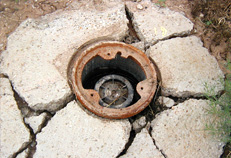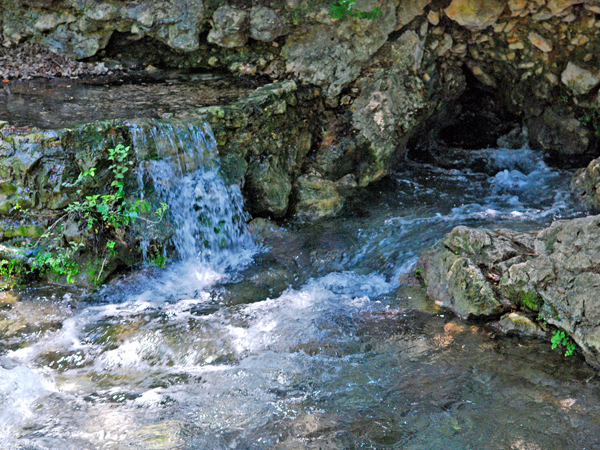Groundwater Contamination
Contamination of Groundwater
The Committee considers groundwater contamination to be the detrimental alteration of the naturally occurring physical, thermal, chemical, or biological quality of groundwater.
There are several ways groundwater can be contaminated. The most common avenues for groundwater contamination are:
- Unplugged abandoned wells
- Well integrity issues, such as poor construction or design, age, negligent maintenance and faulty location (near septic tank)
- Non-point sources (pollution that originates from different sources and cannot be traced to any single point such as a pipe)
- Improper use, disposal or releases of contaminants (motor oil, cleaners, pesticides, etc.)
- Flooding
To learn more, see the following links:
- The Groundwater Foundation's:
- Groundwater Contamination webpage
- "Protecting Our Water: A Primer for Preventing Pathogenic Contamination of Drinking Water Sources", available on their Tools & Resources webpage
- U.S. Geological Survey's (USGS) National Assessment of Volatile Organic Chemicals in Major Aquifer Systems and Rivers contains data and reports
- USGS National Water-Quality Assessment (NAWQA) Pesticide National Synthesis Project
- USGS's Water Science School: Groundwater
- TGPC's Groundwater as Drinking Water
- Texas Commission on Environmental Quality and Texas State Soil and Water Conservation Board's Texas Nonpoint Source Program Annual Reports
- The National Ground Water Association and Ground Water Protection Council have produced a water-testing brochure for household water well owners living near oil and gas development and completion activities, including hydraulic fracturing.
- The Federal Emergency Management Agency, Florida Department of Health, Minnesota Department of Health, Virginia Tech Cooperation Extension, Texas A&M AgriLife Extension Service, and Texas Commission on Environmental Quality have produced How to Disinfect a Private Well System for private water well owners after their water well has been flooded; additional translations are also available.
The Texas A&M AgriLife Extension Service on-line Bookstore offers a number of publications on drinking water contamination (e.g., lead, arsenic, copper, nitrates, radionuclides, etc.), as well as introductory fact sheets such as "Solving Water Quality Problems in the Home" (L-5450) and "What's In My Water?" (E-176). Hard copies or free electronic downloads of these publications are available after setting up an account.
Texas Groundwater and Contamination
Texas' groundwater policy adhere's to the Legislature's goal of non-degradation of the state's groundwater resources. Regulated activities such as pollution discharge and waste disposal should be conducted in a manner that preserves present and future uses of groundwater. Impacted groundwater should be restored, if feasible.
Most of Texas' major and minor aquifers provide safe and sufficient water for all uses. Existing groundwater quality in Texas varies among the major and minor aquifers. In a small percentage of wells, contaminants such as nitrate, sulfate and total dissolved solids have exceeded federal standards. There is considerable debate as to whether contaminants such as nitrate and sulfate are naturally occurring or the result of man-made activities. However, no controversy exists over the documentation of groundwater contamination cases listed in the Joint Groundwater Monitoring and Contamination Report (see the TGPC Publications webpage for the current version).
- An interactive, online map ("Viewer") of the cases in the Joint Groundwater Monitoring and Contamination Report is available that provides users with the ability to query the database for the current and some previous years, obtain spatial relationship information about these cases, and download the data. See the User Guide for more information.
The most commonly reported contaminants come from petroleum storage tank facilities in heavily populated areas of the state such as Houston, Dallas, Fort Worth, San Antonio and El Paso. Contaminants are often released from leaking petroleum storage tanks that include gasoline, diesel, and other petroleum products. Regulations regarding petroleum storage tanks should reduce further threats of contamination.
- TGPC's State Management Plan for the Prevention of Pesticide Contamination in Groundwater. (PDF. Help with PDF.)
- Chapter 26 of the Texas Water Code which outlines state's intention for groundwater policy
- Tex*A*Syst provides a number of great resources reducing groundwater contamination.
- Texas Commission on Environmental Quality's Edwards Aquifer Protection Program. The Edwards Aquifer is regulated differently from other Texas aquifers.
- Texas Alliance of Groundwater Districts
- Texas Water Development Board (TWDB) Groundwater Data
Reports
Reporting Contamination
For reporting unauthorized discharges and spills, please call the Texas Commission on Environmental Quality's (TCEQ's) State of Texas Spill-Reporting Hotline within 24 hours after occurrence at 1-800-832-8224.
For reporting historic contamination, please submit written notification to the appropriate TCEQ Regional Director within 10 days of discovery. Find your Regional Director. Please include as much information possible about:
- the exact address and location of the contamination
- date and method of discover
- the nature of historic contamination
- possible sources of contamination
- estimation of the extent of contamination
- the current property owner or operator of the site
- any other appropriate information
For imminent and dangerous situations, contact the Emergency Response Center at 512/239-2507 or 1-800-832-8224 and the Regional Directory.
Remediation
- Environmental Protection Agency's (EPA's) Contaminated Site Clean-Up Information
- Texas Commission on Environmental Quality's (TCEQ's) Remediation Division
- The Railroad Commission of Texas (RRC) Environmental Cleanup Programs webpage provides information on a number of remediation and clean up programs

















